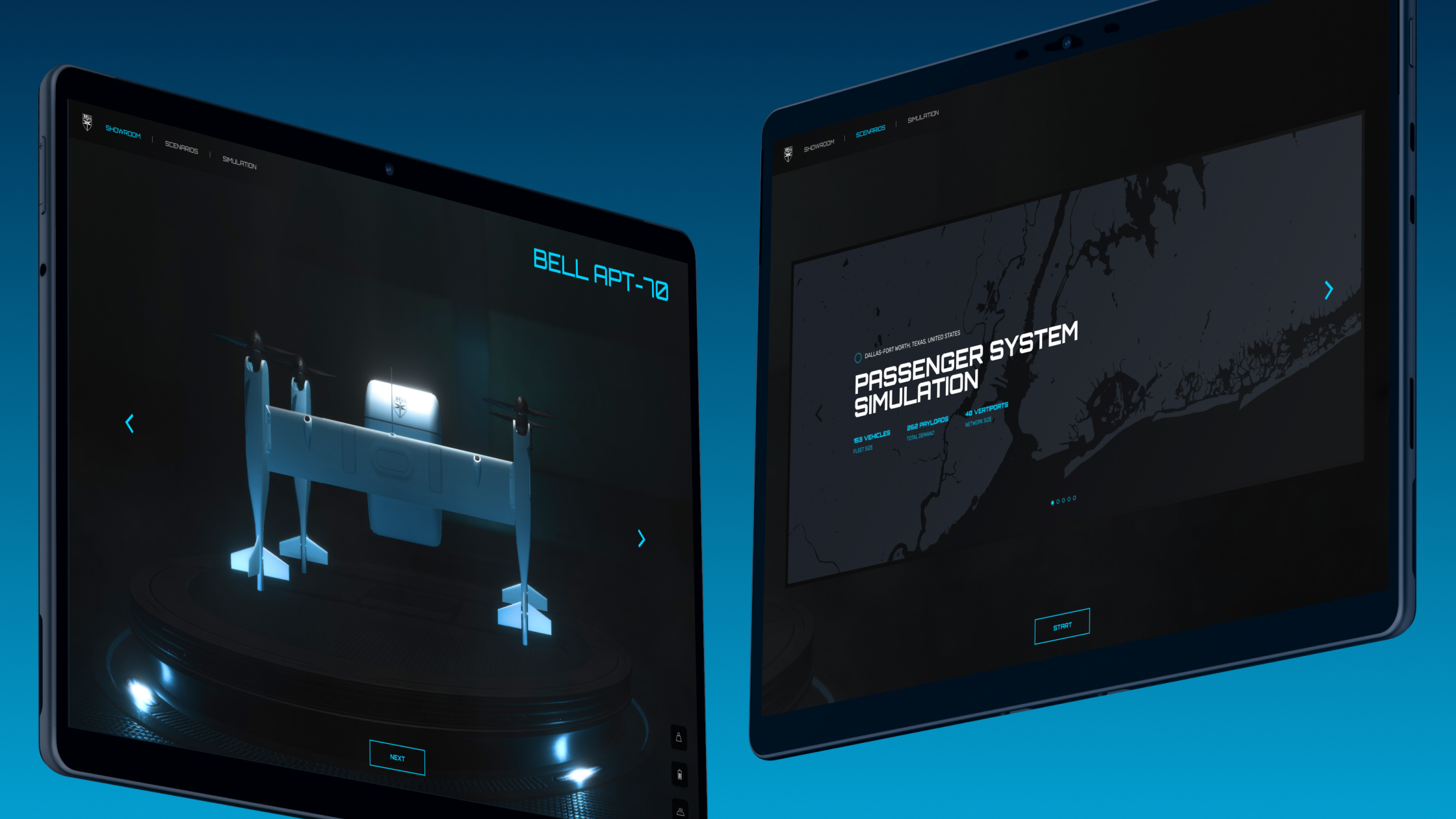The future is gonna be wild. Bell Flight knows it, which is why they've designed an array of autonomous drones capable of delivering heavy payloads across long distances. Though the current applications for this technology are more military-focused (think delivering food and rations to remote locations), I'm sure we can all imagine a not-too-distant future where they'll be bringing us our Uber Eats and Amazon Prime deliveries.
For this reason, Bell Flight came to Unity looking to design a 3D virtual product showcase. The mission: make something one could easily use to pitch and demonstrate the capabilities of these awesome machines. Not only did they need a virtual showroom of sorts for each vehicle, but they had piles and piles of data demonstrating what fleets of these things would be capable of. Naturally, it was my job to bring that dream to reality.

Given essentially a giant pile of excel spreadsheets and thousands of lines of code, my first task was to dig through and outline all of the relevant tracked parameters for each drone in the fleet that could be displayed in a clean and informative manner. From a macro view, the user had to be able to monitor the entire fleet as a whole, over time, and track over progress and success rates of deliveries. From a micro view, the user had to be able to hone in on a singular drone and dig into it's task status, battery charge, itinerary, and beyond.

On top of delivery simulations, the experience required a sleek showcase to demo the products and their features. Instead of having to read these on a text-heavy page, our experience was designed with Tablet in mind so salespeople could demonstrate on the fly, empowering the user to interact with a 3D model of the product demonstrating its various features and capabilities. Neat.
I'm not a trained 3D artist or animator. But I work with them, so I make sure I can speak their language. Designing for 3D can be at times an undefined and abstract experience. It's easy to have an idea in your head of how things should look and behave, but expressing that idea in an effective way to the talented artists on your team can be a challenge. Generally it's a challenge that isn't easily solved with whiteboard scribbles or Figma mockups.
In this case, having some skill in Blender and After Effects really saved my bacon. I used Blender to establish a reliable method for converting terrain GIS data into useable 3D landscapes of real cities. I then took those and built on them in 3D to establish style frames used for look development that our 3D artist could run with. I also effectively prototyped all in-app animations and cutscenes simply by framing and animating 3D models.


Despite a woefully aggressive timeline and lack of resources, we were able to rapidly design, develop, and deliver a fully functional Unity build within only a couple of months to be iterated on further over time. This positive reception of this successful initial engagement led to future collaboration, and Bell Flight told us we could be their wingman, anytime.

